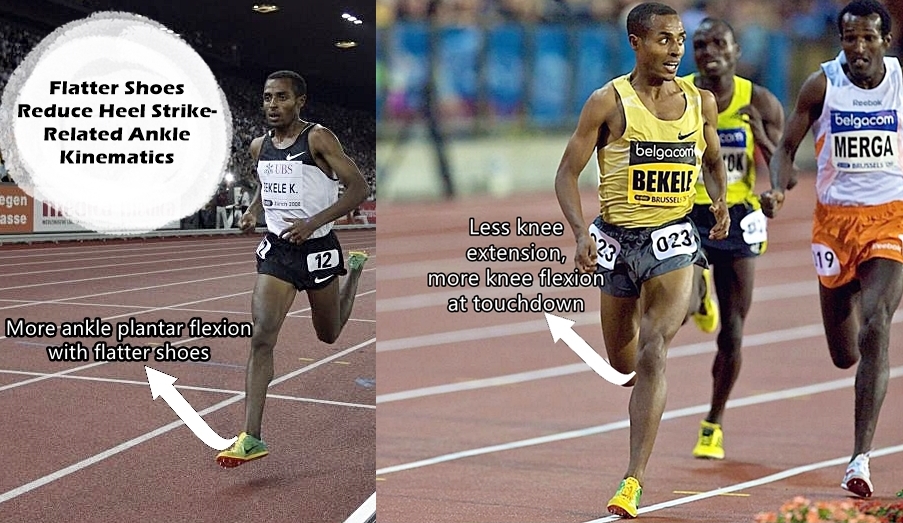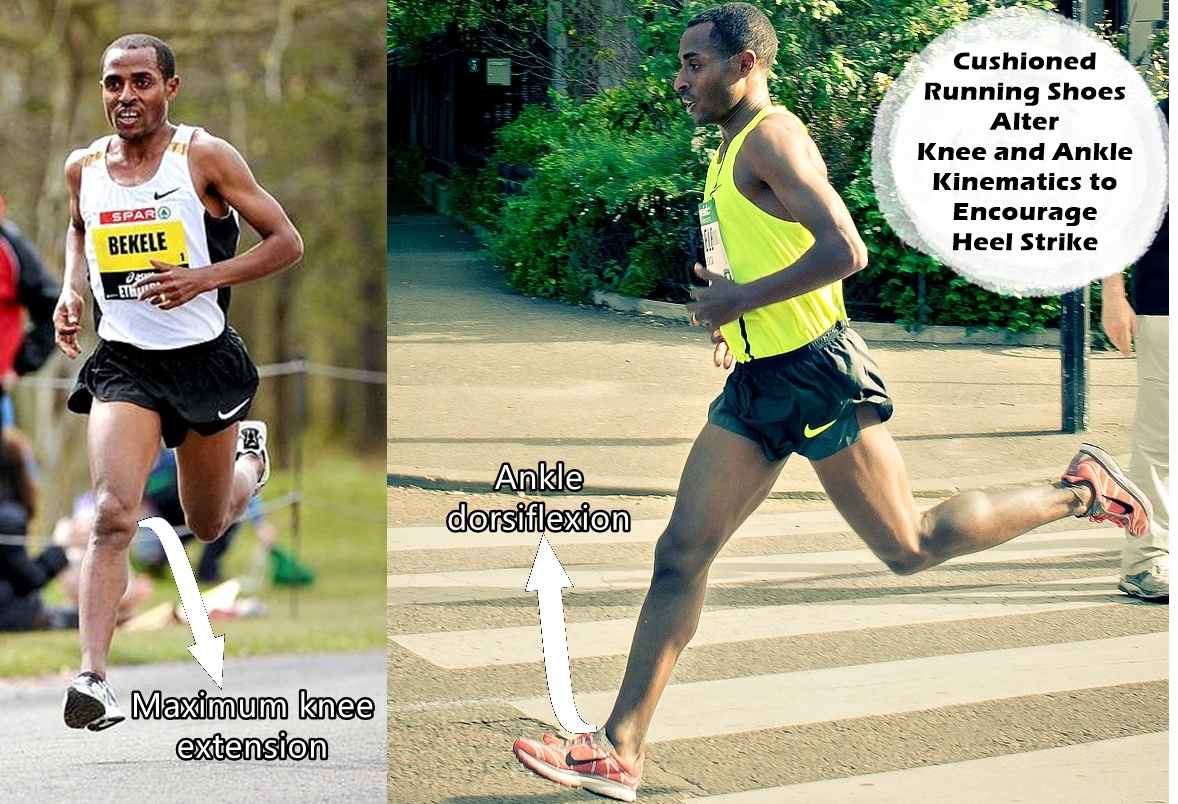In 2014, Kenenisa Bekele made his marathon debut in Paris and won, of course. Shortly after, Bekele’s training was derailed due to an Achilles injury, causing him to withdraw from the upcoming London Marathon.
Indeed, many factors contribute to Achilles problems in marathoners, but you would think elite’s like Kenenisa Bekele are conditioned enough to avoid such an injury. Alternatively, one factor implicated in Achilles injury is foot strike.
Why Kenenisa Bekele Suffered An Achilles Injury
On the track, Bekele predominantly uses a forefoot strike and maintains his forefoot strike mechanics due to racing flats.
Racing flats lack compressible material at the midsole and heel. Furthermore, absent of under-heel cushioning increases ankle plantar flexion at touchdown, therefore heel strike is avoided during running. Racing flats also provide enough sensory feedback to texturally distinguish ground-surface characteristics, aiding in non-aggressive footfalls.
Essentially, racing flats give a better ‘ground feel’ thanks to greater information sent from the plantar proprioceptors to the somatosensory cortex and brain stem which initiate impact-reducing movements. However, on the roads, Bekele wears regular running shoes which interfere with these proprioceptive processes, subsequently triggering high impact movements.
Regular Running Shoes Cause Bekele to Heel Strike
Researchers have catalogued the impact variables associated with running-related Achilles injury, these include high ground reaction forces and loading rates in the vertical direction –both of which are higher in heel strike running than in forefoot running.
Regular running shoes attract Achilles injury by reducing proprioceptive fields, resulting in faulty movement behaviors during running. This can be seen in the picture below, of Bekele showing a strikingly different landing strategy in regular running shoes as compared with racing flats.
This is nothing out of the ordinary because most habitually shod joggers run like this. Like most shod joggers, Bekele demonstrates more knee extension and ankle dorsiflexion at touchdown in regular running shoes as compared with his racing flats. These actions create an ocean of problems on the Achilles tendon.
- Increased knee extension and ankle dorsiflexion at touchdown gives the opportunity to heel strike, exposing the Achilles tendon to vertical loading and vertical ground reaction forces.
- Compressible shoe cushioning may cause rapid, unwanted rearfoot movements during the swing phase, exerting more physical force on the Achilles.
What if Bekele wore racing flats during his marathon training and competition? At least he would have expressed the primivate standards of forefoot running –simulated barefoot-like mechanics.
But isn’t Bekele well-adapted to sustain his forefoot strike in regular running shoes?
The problem is, adequate forefoot strike mechanics depends on the intensity and patterns of proprioceptive signalling. In all cases, compressible materials affect proprioceptive input, output and feedback loops, resulting in a number of interrelated challenges that such an habitually barefoot runner would have to overcome. Ultimately, researchers have a good idea of how joints and reflexes work –they respond accordingly to proprioception. From this, the predicted outcome is easy to understand — if you don’t have enough proprioception, you are going to have irregular responses in movement.
The Take Home Message
Achilles injury suffered during marathon training is labelled as an ‘overuse injury’ when it should be labelled at as an impact-related injury due to proprioceptive dysfunction. Based on Bekele’s shod-induced foot strike variability on the road, the sudden alteration in foot strike probably led to an extremely sharp rise vertical transmitted force, which caused his Achilles injury, not the increase in mileage.
Here are More Injury Caused By Cushioned Running Shoes:
References:
Robbins SE and Hanna AM. Running-related injury prevented through barefoot adaptations. Med Sci Sport Exerc, 1987; 19(2):148-156.
Bretta Riches
BSc Neurobiology; MSc Biomechanics candidate, ultra minimalist runner & founder of RunForefoot. I was a heel striker, always injured. I was inspired by the great Tirunesh Dibaba to try forefoot running. Now, I'm injury free. This is why I launched Run Forefoot, to advocate the health & performance benefits of forefoot running and to raise awareness on the dangers of heel striking, because the world needs to know.
Latest posts by Bretta Riches (see all)
- Heel Strike Running Causes Slipped Discs - 25/04/2024
- How to Train Yourself to Not Heel Strike When Running - 24/04/2024
- Cushioned Running Shoes Found to Be Bad for Ankles - 23/04/2024



He is not heelstriking. Check again paris marathon both clips and photoes. Even the in photo above, he hasn’t touched the ground yet even though it looks as though he has. This same photo could be found in the web showing he is way of the ground.
http://www.flickriver.com/photos/tags/bekele/interesting/
In Bekele’s form even with flats he exetends his knee all the way, and then bends it back and lands forefoot (kinda like a sprinter),
Take a look here- a pic from the same marathon
http://imageofsport.net/search/keywords/Kenenisa%20Bekele/page2
His foot is relaxed about to strike forefoot.
Furthermore, as a forefoot runner who was previously a heel striker, I don’t think it’s possible for a forefoot runner to suddenly start heelstriking, flats or no flats, becuase it is a totally different running technique that activate different muscles. Moreover, about injuries- they can occur with both techniques- as you can see many elite forefooters have injuries.